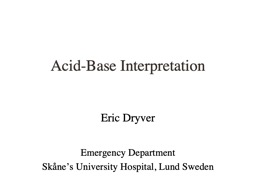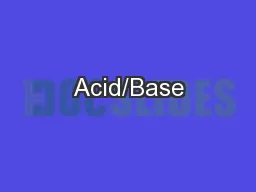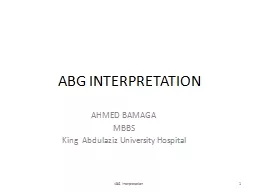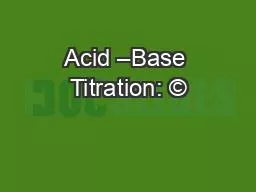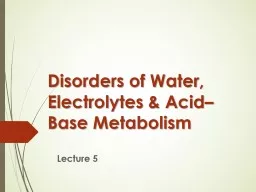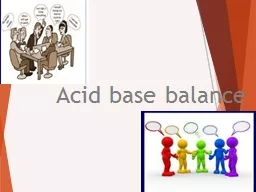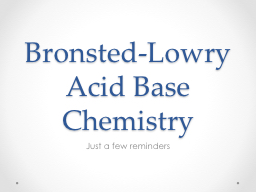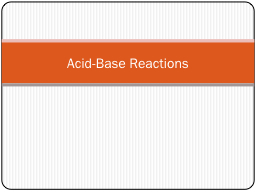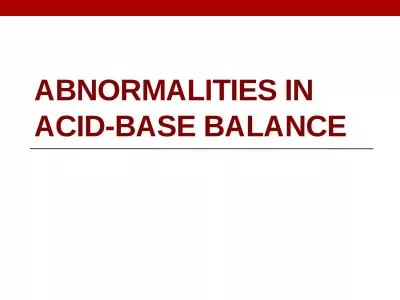PPT-Acid-Base Interpretation
Author : erica | Published Date : 2023-11-21
Eric Dryver Emergency Department Skåne s University Hospital Lund Sweden pH log H Normal pH 738 742 High H leads to low pH pH lt 738 is called acidemia
Presentation Embed Code
Download Presentation
Download Presentation The PPT/PDF document "Acid-Base Interpretation" is the property of its rightful owner. Permission is granted to download and print the materials on this website for personal, non-commercial use only, and to display it on your personal computer provided you do not modify the materials and that you retain all copyright notices contained in the materials. By downloading content from our website, you accept the terms of this agreement.
Acid-Base Interpretation: Transcript
Download Rules Of Document
"Acid-Base Interpretation"The content belongs to its owner. You may download and print it for personal use, without modification, and keep all copyright notices. By downloading, you agree to these terms.
Related Documents

